Wake Forest University is a school that’s proud of its traditions—and nothing illustrates the history of those traditions like student handbooks from the past 100 years or so. Thanks to our partnership with WFU, we’ve just uploaded a batch of those handbooks from 1906 through 2010.
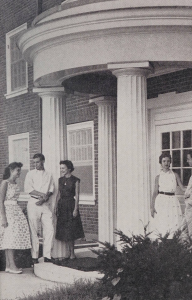
Students outside a dorm, 1956
Beginning on the original campus in Wake Forest, N.C. (where the school was founded in 1834), these handbooks follow students and faculty through several of the school’s major milestones, including a move to Winston-Salem, N.C., in 1956.
This photo, from the 1956 handbook, is from the first year that students were at the Winston-Salem campus. Except for the fashion, this might look like a familiar scene to many current WFU students.
The handbook reads, “Among Wake Forest’s oldest and most cherished traditions are the magnolias. The tree’s beautiful white blossoms have for many become almost synonymous with the name Wake Forest. The former campus in the village of Wake Forest was covered with magnolias, and that tradition has been transplanted here with all the others. The trees are plentiful on the new campus and are placed in prominent positions.” In fact, there is still an area of campus know as the “mag quad” (short for “magnolia”) near the first-year dorms where the trees are supposedly grown from old campus saplings.
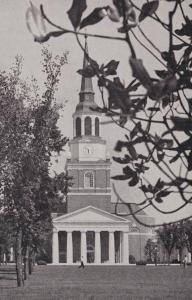
Wait Chapel, 1956
Throwing things way back to 1913, it’s easy to see the school’s early connections to the Baptist Church. The 1913-14 student handbook is presented by the College Young Men’s Christian Association (Y.M.C.A), and it’s clear that participation in church activities was a big part of life as a student. Bible study is encouraged for all students, and “Attendance upon Daily Prayers and upon Sunday morning service is required.” The 1913-14 handbook is also truly the size of a person’s hand—a trend that has been abandoned with regard to contemporary “handbooks.”
Another big change for Wake Forest came in 1942, when the school began admitting women. This was due to the decline in enrollment as young men went to fight in the Second World War. You wouldn’t know it based on the language in the 1942-43 handbook, which uses phrases like, “each new man will be assigned to an adviser” and “New men who enjoy singing with their fellow students and who can carry a tune are not only asked but urged to report for the first practice.” Though there is mention of social societies holding “smokers,” to which they invite “all the women, half the men, and a faculty member.”
Also in the 1942-43 handbook? An ad for Shorty’s—the original restaurant in Wake Forest, N.C.
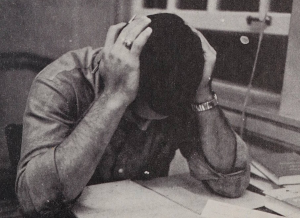
A student studying, 1962
In 1961, the school formally ended racial segregation, extending admission to students of color (however, there doesn’t seem to be any indication of this in the 1961 handbook or even the 1962 handbook). Instead, there’s a photo that depicts a tradition that, again, many Wake students of today will find familiar.
To see the full batch of Wake Forest University handbooks, click here. To learn more about Wake Forest University as it is today, you can visit their partner page or their website.

Carolina Baptist newspaper masthead from September 2, 1857.
Thanks to our partner, Wake Forest University, there are 19 new newspapers added to DigitalNC. Dating from 1857 to 1925, these newspapers were written for Christian communities from the mountains to the Piedmont to the coast of North Carolina.
Most of the newspapers are affiliated with the Baptist denomination, and their audiences vary in size and geography. Some were published for specific churches, like the Broad Street Worker “Devoted to the interests of Broad St. Baptist Church” in Winston, N.C. Others were published for a wider audience by regional, state, or national organizations, like the North Carolina Baptist Missionary Worker and The Gospel Herald published by the Boards of the Baptist State Convention, and the Conflict published by the Anti-Evolution League of America.
To look through the 58 issues of these publications, click the links below:
- The Atlantic Messenger (New Bern, N.C.)
- The Baptist Messenger (Newton, N.C.)
- The Baptist Messenger (Wingate, N.C.)
- The Baptist Sunday School Monthly (Henderson, N.C.)
- The Baptist Worker (Gastonia, N.C.)
- The Blue Ridge Baptist (North Wilkesboro, N.C.)
- The Broad Street Worker (Winston, N.C.)
- Carolina Baptist (Hendersonville, N.C.)
- The Central Messenger (Wake Forest, N.C.)
- The Conflict (Memphis, Tenn.)
- Gaston County Baptist Messenger (Gastonia, N.C.)
- The Gospel Herald (Raleigh, N.C.)
- The Helper (Wilmington, N.C.)
- North Carolina Baptist Missionary Worker (Raleigh, N.C.)
- North Carolina Baptist Sunday School Chautauquan (Raleigh, N.C.)
- Southwide Baptist News and Ridgecrest Reporter (Marshall, N.C.)
- The Stanly Baptist (Big Lick, N.C.)
- The Vance County Union (Henderson, N.C.)
- West Chowan Baptist Messenger (Winton, N.C.)
To see other materials from Wake Forest University, visit their partner page or their website.
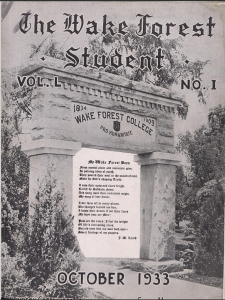
Additional issues of Wake Forest University’s The Student are now online. The additional issues cover 1906 through 1935. The Student was typically published quarterly and featured articles, opinion columns, and stories written by the students of what was then Wake Forest College, located in Wake Forest, North Carolina. The later issues, published in the 1930s have more of a magazine feel than the earlier issues, which are focused literary journals. Topics covered include World War I, the depression, college life, dating, and social issues such as homelessness, the mentally infirm, and the death penalty. Each issue includes a humor section as well. The later issues also include a number of advertisements for both local businesses in Wake Forest and Raleigh and a number of full color cigarette ads. 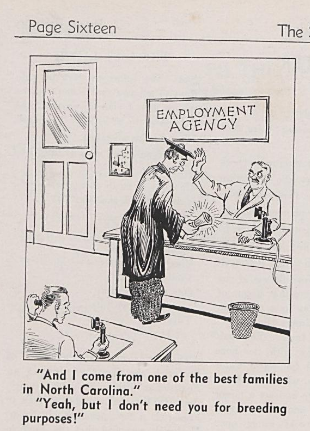
To read about previous batches of The Student we have digitized, visit here and here and here. Visit Wake Forest University’s partner page to learn more about what they have contributed to DigitalNC.
![Wake Forest University Jurist [Fall 1988], page 1](https://www.digitalnc.org/wp-content/uploads/2016/12/wfu.png)
Wake Forest University Jurist [Fall 1988], page 1
25 years of the Wake Forest University School of Law’s Jurist are now available on DigitalNC.
These campus publications document the updates about the goings on Wake Forest School of Law, the accomplishments of alums, and various information about the institution and the field of law generally. These documents could be useful for research
The Jurist was published in the fall and spring semester each year. To browse all of the digitized volumes of the Jurist, follow this link.
To see all of the materials from the Wake Forest University Professional Center Library, please visit the contributor page or the website.
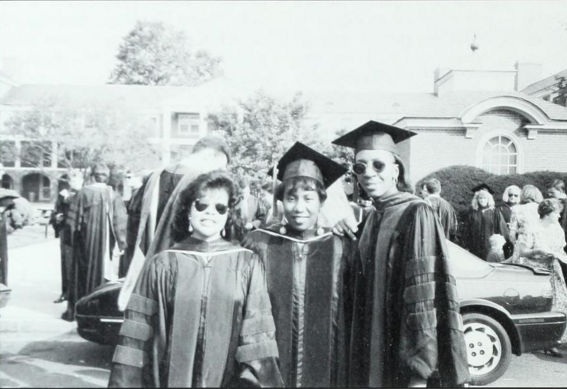
Wake Forest University Jurist [Spring/Summer 1992], page 7
The Wake Forest Jurist is the alumni magazine associated with the Wake Forest School of Law. The Jurist includes featured stories, news and updates about the law school and prominent alums, and columns from the deans. Issues from 1989-2014 are online.
You can see see all the new issues at the following link. or through the Library’s contributor page. To learn more about the Wake Forest University Professional Center Library, you can also visit their website.
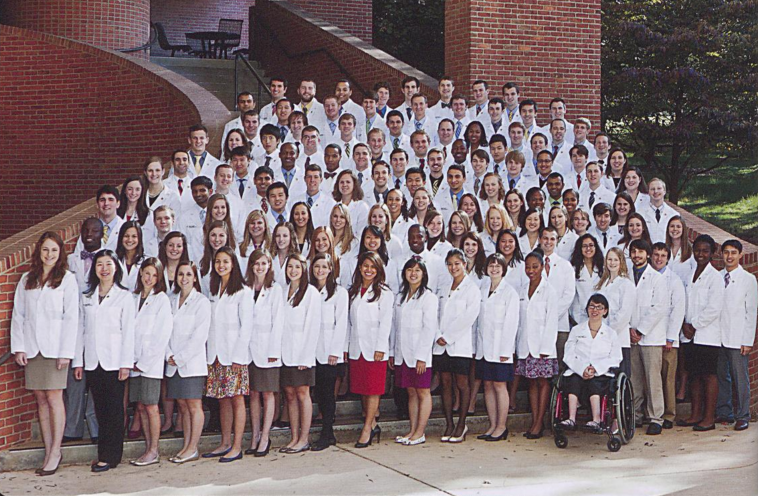
Wake Forest Medical School class of 2015.
We have uploaded four new yearbooks from the Wake Forest University School of Medicine. The yearbooks, called “Grey Matter,” are from 2012 to 2015. They feature medical students and PA students as well as faculty. The yearbooks include student photos, white coat ceremonies, match day, clubs, student groups, intramural sports, and various events.
These four yearbooks join 73 others from the Wake Forest University School of Medicine, the earliest from 1943. The Wake Forest School of Medicine was founded in 1902 with the goals of “teaching excellence in clinical medicine, promoting strong clinical and basic research, rendering exemplary patient care and stressing service to the community.” You can learn more about the school on their website and see more content from them and older blog posts on their contributors page.
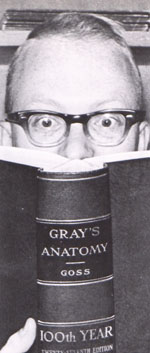 Student yearbooks from the Wake Forest University School of Medicine are now available on DigitalNC. The site contains 72 volumes, ranging back as far as 1943, from the medical school, formerly known as the Bowman Gray School of Medicine. The yearbooks also include nursing students from the North Carolina Baptist Hospital School of Nursing.
Student yearbooks from the Wake Forest University School of Medicine are now available on DigitalNC. The site contains 72 volumes, ranging back as far as 1943, from the medical school, formerly known as the Bowman Gray School of Medicine. The yearbooks also include nursing students from the North Carolina Baptist Hospital School of Nursing.
The yearbooks are from the collection of the Dorothy Carpenter Medical Archives at the Coy C. Carpenter Library at the Wake Forest School of Medicine.
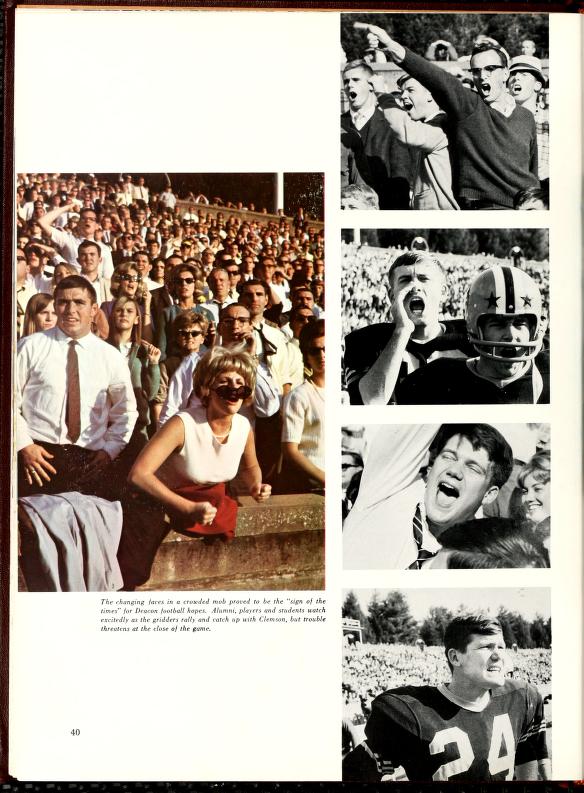
Student yearbooks from Wake Forest University spanning the years 1903 to 1995 are now available on DigitalNC. The above image, from the 1967 volume of the Howler, was taken during the 1966 Homecoming football game against Clemson University.
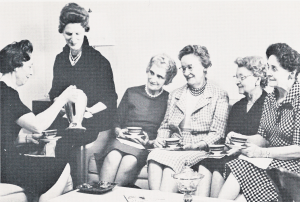
The house hostesses of Wake Forest, 1963-64
When Wake Forest College (now Wake Forest University) started admitting women in 1942, they decided that female students would need their own set of rules about conduct. Now, thanks to our latest batch of materials from ZSR Library at WFU, it’s easy to see what those rules were. As you might expect from a once Baptist institution, many of them clash against contemporary student life; for instance, women were almost never allowed to have a car on campus, and drinking alcohol was punishable by suspension or expulsion.
But beyond some of these more predictable rules are several that depict a campus that would be almost unrecognizable to students today. Here are some of the silliest examples from 1945-1971 (all of which the author of this post, a 2019 alumna, is happy to have avoided).
1. Typewriters must not be used before 7:00 in the morning or after 11:30 at night. (1945-46)
Presumably, this is about the noise of typewriter keyboards keeping other students awake, but it also serves as a reminder that academic all-nighters haven’t always been the norm.
2. No man, not even a father, may go to a student’s room except with the knowledge of the house hostess. (1946-47)
You would have to know which of the ladies in the photo above was in charge of your dorm and ask for permission. This was also true for things like visitors, day trips, and coming home late.
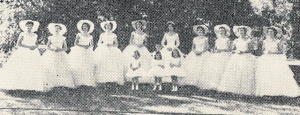
The Magnolia Court, 1955-56
3. Sometimes you may receive an unexpected caller or phone call in the parlor when you are not properly dressed. On these occasions you should slip into a raincoat and a pair of shoes before going out into the parlor. And if your hair is in rollers be sure to put on a scarf. (1965-66)
A classic problem with an undeniably specific solution.
4. The identification card is not replaced under any circumstances, even if it is lost, stolen, or destroyed through no fault of the student. (1955-56)
This would probably send a chill through many of today’s demon deacons. I would wager that the number of today’s students who keep up with their student ID from freshman orientation through graduation is in the single digits.
5. It’s a College rule that participating in or inciting a riot (and this includes panty raids) is subject to penalty. (1965-66)
A true window into campus culture.
6. You will be considered on a date if you leave the dormitory with a boy after 7:30 p.m. However, you are permitted to go to the library or to one of the science laboratories with a boy without being considered on a date. (1970-71)
Some contemporary students may find themselves asking romantic partners to define the relationship. If only the student handbook would lay it out so clearly, as it did in 1970.
7. Telephone calls should be limited to five minutes. (1957-58)
There’s only one phone in the dorm, and everyone wants to use it.
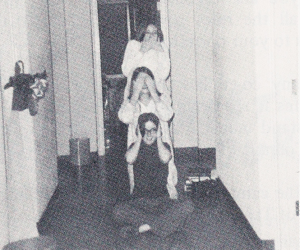
Three students from the 1970-71 handbook
8. Rooms will be inspected every morning, and beds must be made by 10:30 a.m. (1957-58)
Although students who make their bed every morning by 10:30 a.m. are probably more common than students who keep up with their ID for four years, the numbers still aren’t looking great.
9. The giving and receiving of affection is a very personal thing and something you do not want to cheapen by making a spectacle of yourself. (1968-69)
This sounds more like free advice, but the entry goes on to detail what constitutes public affection (anything that makes other people uncomfortable) and a structure of punishment for each offense.
10. Bermudas may not be worn at all on the campus, to classes, cafeteria, soda shop, movies in town, eating establishments, down town shopping, in the formal parlor, or while sitting in the small parlor entertaining, or out the front door to go to the gym. (1960-61)
Strangely, this rule seems to hold—if only because Bermuda shorts for women aren’t the fashion force that they once were or because very few students are still going out to soda shops.
11. Hose are worn when going to Raleigh. (1953-53)
How better to represent your school when galivanting around the capital?
For more details about how the young women of Wake Forest presented themselves in this period, you can look at the full batch of women’s handbooks (and, if you’re so inclined, compare them with the general student handbooks for male students). More materials from Wake Forest University can be found on their partner page and their website.
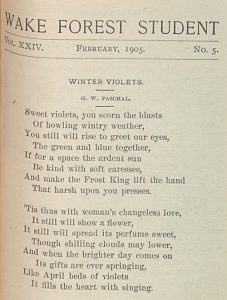
A poem from volume 24 issue 5 of the Wake Forest Student
New issues of the Wake Forest Student from our partner Wake Forest University are now upon DigitalNC. These issues are from 1900-1906, and join the previously digitized issues from 1892-1900.
The Wake Forest Student is a literary magazine that was started in 1882 by the Euzelian Society at Wake Forest University. This magazine contains stories, poems, and essays by local authors, reprints of well-known stories and poems, and editorials and news items specific to Wake Forest University.
One recurring section, “In and About college”, lists sentiments and happenings around campus in successions of increasingly long statements. Included are updates on what faculty, staff, and students have been up to, facilities renovations and information, and recounts of special events. While this section always starts off with a few words on each subject, it ends in longer and longer paragraphs about Wake Forest happenings.
To learn more about Wake Forest University, visit their partner page, or take a look at their website.
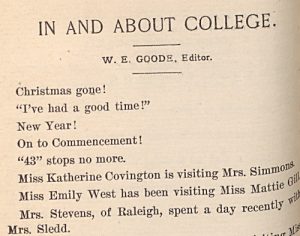
The beginning of an “in and about college” section from volume 24 issue 4 of the Wake Forest Student






![Wake Forest University Jurist [Fall 1988], page 1](https://www.digitalnc.org/wp-content/uploads/2016/12/wfu.png)









